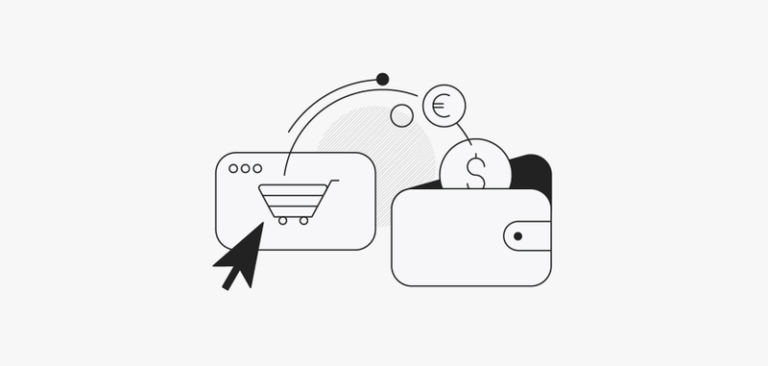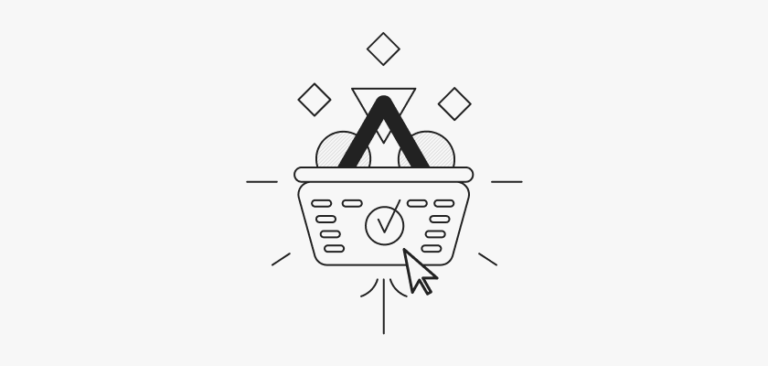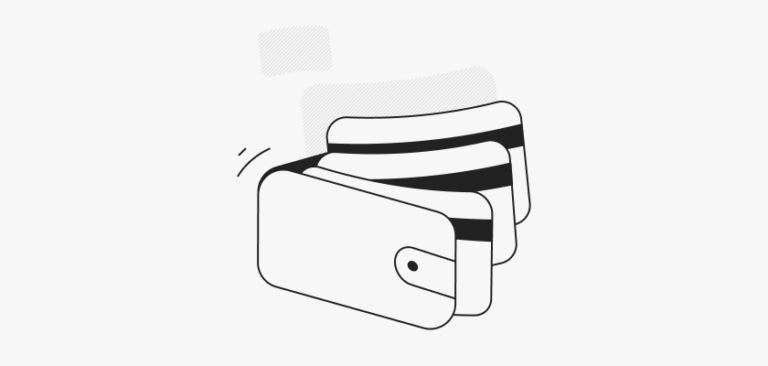Any company that accepts online payments is vulnerable to data theft. Hackers continuously devise new ways to breach secure networks and steal customer data, making it essential for businesses offering online payments to take every measure necessary to protect customer information. Ideally, this would be done while still offering a frictionless checkout experience.
Thankfully, there are ways you can protect your customers and brand reputation while still offering a smooth user experience. All it takes is a good understanding of the best security practices when accepting online payments. In this guide, we’ll share the most important practices for secure online payment processing so you can protect your customers and your business.
Why online payment security is essential
Before we get into the best practices, let’s outline why it’s so important for your business to prioritize payment security:
-
- Protect customers’ personal information: Online transactions are vulnerable to data breaches. It’s essential that you provide a secure payment process to protect your customers’ sensitive data and mitigate the risk of fraud – which brings us to our next point.
-
- Prevent fraud: E-commerce retailers and online merchants are consistently at risk of fraud, whether that’s money laundering, identity theft, or unauthorized transactions. Part of offering a secure online payment process is including fraud detection measures that can identify and prevent fraudulent transactions as they happen.
-
- Maintain compliance: Online retailers are required to comply with industry requirements, which include security standards that protect customer data. Businesses that operate in the EU also have to comply with PSD2 Strong Customer Authentication (SCA), which mandates the use of multi-factor authentication for online payments. Implementing best practices for secure online payment processing ensures you’re meeting your compliance requirements. Failing to do so can lead to heavy penalties, fines, and a damaged reputation.
-
- Reduce chargebacks: Chargebacks happen when customers dispute a transaction and request a refund from their financial institution. These usually occur as a result of fraudulent transactions and result in financial losses for the merchant who has to bear the cost of chargeback fees. Implementing fraud-detection measures can help eliminate the risk of chargebacks and save your company money while also protecting your customers.
Best practices for secure online payments
Now that you know why payment security is so important, let’s look at what you can do to keep transactions on your website safe. Below, we discuss essential best practices for secure online payment processing.
1. Encrypt data with TLS
TLS data encryption is essential in providing secure online payment methods. When someone makes a purchase on your website, their sensitive information (credit card number, CVV, etc) is transmitted over the internet. Without proper security protocols, such as encryption, this information can be intercepted and used for fraud.
Data encryption protects your customer data by scrambling it so that it cannot be intercepted by a third party. Two key protocols for encrypting data are Secure Sockets Layer (SSL) and Transport Layer Security (TLS).
-
- Secure Sockets Layer (SSL): This is an internet security protocol that guarantees data privacy and integrity. Your website should have a valid SSL certificate to establish secure connections using TLS.
-
- Transport Layer Security (TLS): This evolved from SSL and offers added reliability and security. TLS encryption maintains anonymity, confidentiality, and data integrity. Without it, data transmitted over the internet can be accessed by anyone.
Securing transactions on your website with SSL and TLS protocols ensure that sensitive information is encrypted, private, and only accessible by those with permissions.
2. Match IP and billing information
One way your business can provide secure payments is by flagging potentially fraudulent transactions before they happen. You can do this with Address Verification Service AVS), which compares the buyer’s IP address to the billing address of the credit card used in the transaction. This can provide extra assurance that the person making the transaction is, in fact, the cardholder and not a fraudulent actor.
3. Understand PCI compliance requirements
The PCI Security Standards Council is a global organization that sets compliance rules for managing sensitive cardholder data. Any business that processes, stores, or transmits credit card data must comply with the Payment Card Industry Data Security Standards (PCI DSS).
Key elements of PCI DSS compliance include:
-
- Processing payments over a secure network: You can do this by using a payment gateway that doesn’t use default credentials (e.g. PINs provided by the manufacturer), implementing firewalls to protect your website from security threats, and allowing customers to easily change their credentials.
-
- Protecting cardholder data: This involves restricting access to sensitive cardholder information, both physically and electronically, so that it can only be viewed by authorized personnel.
-
- Encrypting data during transmission: This can be done by using TLS protocols as outlined earlier in the article.
-
- Maintaining secure infrastructure: You can do this by keeping software updated to protect against vulnerabilities and running regular scans against spyware.
- Maintaining secure infrastructure: You can do this by keeping software updated to protect against vulnerabilities and running regular scans against spyware.
Non-compliant businesses that experience a data breach suffer huge consequences including fines, penalties, loss of customer trust, and a damaged reputation. The easiest way to comply with PCI DSS is to never see or access customer payment data.
Generally, using a secure payment processor can help you maintain compliance, however it’s good practice to stay updated on your obligations and compliance requirements as a merchant.
4. Implement 3D Secure
The 3D Secure (3DS) protocol is an authentication method that prevents unauthorized and fraudulent transactions. It provides an extra degree of security during the checkout process that protects both customers and businesses.
3D Secure 2 (3DS2) is the latest version of 3DS and adds an extra step in the online checkout process. This could be a one-time password sent to the cardholder’s mobile phone or biometric scans, such as facial recognition. This extra authentication information helps ensure the person making the transaction is the cardholder and not a fraudulent actor.
Because 3DS adds an extra step to the checkout process, it may not always be user-friendly. Before implementing it, consider whether your priority is user experience or fraud prevention. In the UK and EEU, use of 3DS is mandated. If you’re considered a low-risk merchant, however, you may be exempt from using it for low-value transactions or if your fraud rates are below a certain threshold.
5. Choose a secure platform & payment gateway
One of the best ways to maintain secure payments online is choosing a secure platform and payment gateway. Essentially, using a secure payment system is the key to offering secure online payments. When choosing a payment gateway, make sure it is trusted and reputable with strong security measures and a commitment to protect customer data.
Besides the security of your payment gateway, it’s also important to keep your website and content management system (CMS) secure. You can do this by:
-
- Regularly updating software & plugins: Most updates address security vulnerabilities and ensure your website remains secure.
-
- Use a robust firewall: Firewalls protect your website and CMS from unauthorized access.
-
- Require strong passwords: Ensure your customers use complex and unique passwords to protect their accounts.
-
- Use a Content Delivery Network (CDN): CDNs distribute traffic across multiple servers and can help protect your website from Distributed Denial of Service (DDos) attacks.
6. Use two-factor authentication or multi-factor authentication
Two-factor authentication (2FA) and multi-factor authentication (MFA) add an extra layer of security that verifies a user’s identity during a transaction.
2FA uses two different methods to authenticate a user’s identity before granting them permission to make a payment or log in to a website. The first method, or factor, is something the user knows, usually their password. The second factor is something that only the user can access, such as a one-time password (OTP), CVV, or biometric scan. For example, a user may enter their username and password and then be prompted to receive a one-time password (OTP) to their mobile number or email address.
MFA is like 2FA but includes more authentication factors. For example, a user may need to provide their password, OTP, and fingerprint scan. Including these extra authentication factors makes it difficult for unauthorized users to access an account. The more authentication factors used, the more security is offered.
7. Use payment tokenization
Payment tokenization is a process where sensitive payment data, such as a credit card number, is replaced with a unique digital identifier called a ‘token’. This token is used to process the transaction without having to transmit or store the actual cardholder information.
The benefits of using tokenization include:
-
- Added security: Using payment tokenization can reduce security breaches by eliminating the need for e-commerce websites to store credit card data.
-
- Reduced compliance costs: This secure online payment method makes it easier for your business to comply with PCI DSS and General Data Protection Regulation (GDPR) standards that govern how merchants protect sensitive payment information.
-
- Enhanced customer experience: Tokenization eliminates the need for customers to repeatedly input their information for recurring payments. This improves user experience and can reduce abandoned cart rates.
8. Use fraud detection tools
Fraud detection tools can help reduce the risk of unauthorized transactions by identifying and preventing fraudulent activity. When used in addition to the online payment security methods outlined in this article, they can drastically reduce risk of fraud.
Different types of fraud detection tools include:
-
- Rule-based systems: These use predefined rules to detect and flag suspicious transactions.
-
- Behavioral analysis: These tools analyze user behavior to pick up on patterns that may be a sign of fraud.
-
- AI tools: These tools use machine learning to learn from historical data and detect patterns that may indicate fraud.
9. Train employees
Finally, one of the best ways to maintain secure online payment processing is to ensure your team can identify potential security threats and know how to respond. There are many ways you can train your employees on online payment security, including:
-
- Training sessions: The first step is to train employees on what payment security is, best practices for handling sensitive customer information, and fraud prevention.
-
- Policies & procedures: Develop policies and procedures around secure payment processing and ensure all staff understand and comply with them.
-
- Encourage reporting: Make it easy for employees to report suspicious activity immediately. To encourage reporting, you can send regular reminders or put up posters around the office.
-
- Send updates: Keep your team updated on new threats or security vulnerabilities that they should look out for. Where possible, provide further training.
A payment gateway that prioritizes security
Ultimately, the best way to protect your customer’s sensitive information is with a payment processor that puts security at the forefront. At ZEN, we balance a seamless checkout experience with robust security measures that safeguard payment data.
With built-in features that streamline the payment process, drive conversions, and make it easy to scale globally, security is just one benefit to ZEN. Speak to one of our dedicated experts and see why we’re the best offer on the market.



